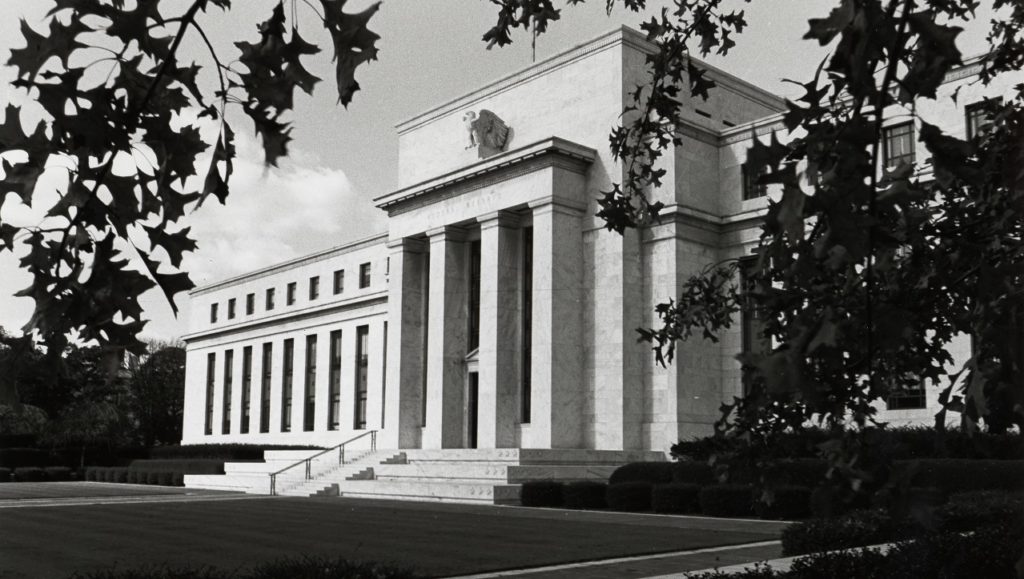Fed Officials Claim They Can Shrink the Balance Sheet a Lot More; It Can’t

Federal Reserve officials insist they can still shrink the balance sheet significantly more than they already have.
You can file this assertion under the same category as “inflation is transitory,” and “the problems in the subprime mortgage market are contained.”
In other words, Fed officials have detached from reality — again.
A Reuters article summed up the thinking of these Fed officials this way.
Federal Reserve officials believe their effort to shrink the US central bank’s bond holdings is far from done, pushing back against some economists’ idea that dwindling financial sector liquidity would bring the drawdown to a close in coming months. Instead, Fed officials reckon there remains a lot of liquidity, properly measured, for them to remove as part of their push to tighten financial conditions and bring down inflation.”
Dallas Fed President Lorie Logan said, “I am confident that we have room to continue running off our assets for quite some time.”
I bet she was also confident inflation was transitory.
There are two primary reasons I think these Fed officials are blowing smoke and balance sheet reduction won’t last much longer.
- The balance sheet reduction so far has been less than impressive
- The US government needs quantitative easing, not quantitative tightening
They Can’t Even Follow Their Own Plan
In the first place, the Fed isn’t even keeping up with its own balance sheet reduction plan. The central bank has missed its reduction target seven out of the last eight months.
The plan called for $30 billion in US Treasuries and $17.5 billion in mortgage-backed securities to roll off the balance sheet in June, July and August. That would total $45 billion per month. In September, the Fed said it would increase the pace to $95 billion per month.
Given the plan, the Fed balance sheet should have dropped by $655 billion as of the end of December. To date, the balance sheet had only shrunk by about $420 billion.
That may seem like a healthy drop in the balance sheet, but it is a very small drop in a very big bucket in the big scheme of things.
Here’s some perspective.
In the wake of the 2008 financial crisis, the Federal Reserve ran three rounds of quantitative easing, pushing the balance sheet from $8.98 billion to just over $4.5 trillion.
The central bank tried to unwind some of this and reduce the balance sheet in 2018. Remember when it said balance sheet reduction was on “auto-pilot?” Well, that didn’t last long. The Fed quickly reversed course after the stock market crashed and the economy got wobbly in the fall of that year. At its low point, the balance sheet dipped just below $3.76 trillion.
The Fed had already returned to quantitative easing before the coronavirus, and the balance sheet was back above $4 trillion in October 2019. QE went on steroids during the pandemic, with the balance sheet peaking at $8.965 trillion on April 11, 2022.
In effect, between 2008 and 2022, the Fed injected nearly $8 trillion in money created out of thin air into the economy.
To put the balance sheet reduction efforts into context, if the Fed followed the current plan at $95 billion per month, it would take 7.8 years for the Fed to shrink its balance sheet back to pre-pandemic levels.
This raises a question: if the Fed is really committed to slaying inflation, why is it shrinking its balance sheet so slowly?
The answer is that it knows it can’t shrink the balance sheet significantly without wrecking the bond market and putting the US government into an untenable position, not to mention tanking an economy that depends on low interest rates and easy money.
That brings us to the second reason I think these Fed officials are full of it.
Who Is Going to Buy All of These Bonds?
The fact is the US government needs the Federal Reserve to run quantitative easing in order to monetize the debt and backstop its borrowing and spending. Without the Fed’s intervention in the bond market, the borrowing and spending Ponzi scheme will collapse.
Here’s how it works in simplified terms. The Federal Reserve buys Treasury bonds with money created out of thin air and puts them on its balance sheet. This is debt monetization. Fed buying creates artificial demand for Treasuries. That boosts the price and holds interest rates down. With the central bank buying bonds, the US Treasury can sell more into the market without running interest rates too high.
Quantitative tightening, or balance sheet reduction, has the opposite effect. If the Fed stops buying bonds and lets Treasuries roll off its books, somebody out there has to buy more bonds to take up the slack. In effect, there is a larger supply of bonds on the market and less demand. Prices fall and interest rates rise.
This is a big problem for a US government already over $31 trillion in debt. If interest rates continue to rise, it will put the federal government in an untenable situation.
According to an analysis by the New York Times, net interest costs have already risen by 41% over the past calendar year. According to the Peterson Foundation, the jump in interest expense was larger than the biggest increase in interest costs in any single fiscal year, dating back to 1962. That’s just with the tepid balance sheet reduction we’ve seen so far. If interest rates remain elevated or continue rising, interest expenses could climb rapidly into the top three federal expenses. (You can read a more in-depth analysis of the national debt HERE.)
And again, if the Fed isn’t buying a bunch of Treasury bonds, who will take up the slack? It’s not like the federal government is going to suddenly stop spending money. It has to keep issuing bonds in order to pay off holders of maturing bonds and to fund new spending.
The Biden administration is already spending at a half-a-trillion-dollars per month clip. And there’s more spending coming down the pike. That means the US Treasury will need to sell even more bonds to cover the massive deficits once Congress jacks up the debt ceiling again.
The bottom line is the US government depends on the Fed to backstop its borrowing and spending. That’s why any balance sheet reduction scheme has a very short shelf life.
Same Song and Dance
We’ve heard this song and dance from Fed officials in the past. Ben Bernanke sang a similar tune when he launched the first big quantitative easing program after the financial crisis.
In the early days of the Great Recession, Bernanke assured Congress that the Fed was not monetizing debt. He said the difference between debt monetization and the Fed’s policy was that the central bank was not providing a permanent source of financing. He said the Treasurys would only remain on the Fed’s balance sheet temporarily. He assured Congress that once the crisis was over, the Federal Reserve would sell the bonds it bought during the emergency.
Today, we know this was complete BS. Not only are most of the bonds bought during those first three rounds of QE still on the Fed’s balance sheet today; the central bank has piled on trillions more.
We should know by now that people at the Fed constantly say stuff that ends up being wildly untrue. “This isn’t debt monetization.” “The problems in subprime are contained.” “Balance sheet reduction is on autopilot.” “QE won’t cause inflation.” “Inflation is transitory.”
As Peter Schiff said in a 2021 interview, the Fed’s primary role is that of a public relations firm selling the populace on bad economics and trying to convince everybody that everything is great. You should analyze everything these Fed officials say in that light.
Call 1-888-GOLD-160 and speak with a Precious Metals Specialist today!
Buka akaun dagangan patuh syariah anda di Weltrade.
Source link







